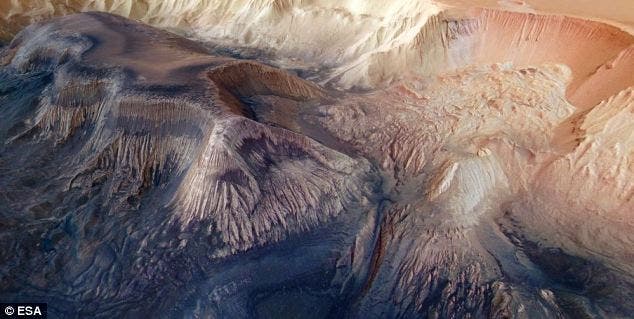- A huge megaflood may have carved the U-shaped canyons we can now see in Idaho some 46,000 years ago.
- The similarities suggest that the same phenomenon occurred on Mars as well were similar geological formations were found.

After studying several U-shaped canyons in south-central Idaho, US, geologists at Caltech propose that these characteristic formations were made by megafloods some millions of years ago. Interestingly enough, these features are very akin to some canyons observed on Mars via satellite, suggesting that these too may have been formed by huge floods.
Canyons sparked by a dramatic event
The amphitheater-headed canyons of Malad Gorge State Park, Idaho are sculpted in a flat plain made from basalt – a volcanic rock. Two canyons in particular, Woody’s Cove and Stubby Canyon, are characterized by tall vertical headwalls, roughly 150 feet high, that curve around to form an amphitheater. These geological structures were formed as lava hardened in several layers. As the lava cooled and contracted, vertical cracks emerged across the entire layer of lava-turned-basalt. As each additional sheet of lava covered the same land, it too cooled and cracked vertically, leaving a wall that, when exposed, looks like stacks of tall blocks, slightly offset from one another with each additional layer. This type of structure is called columnar basalt.

The columnar basalt formation theory is well understood – no debate here. What’s controversial is how canyons like Woody’s Cove and Stubby Canyon got their curved shape. One widely accepted theory says that “groundwater sapping,” a process in which springs at the bottom of the canyon gradually carve tunnels at the base of the rock collapsing the basalt columns, explains the formations.
The theory didn’t convince the Caltech researchers, though. Their objection is based on two grounds: there is no evidence of undercutting in these particular canyon formations and, second, undercutting should leave large boulders in place at the foot of the canyon.
“These blocks are too big to move by spring flow, and there’s not enough time for the groundwater to have dissolved them away,” Caltech professor of geology Michael P. Lamb explains, “which means that large floods are needed to move them out. To make a canyon, you have to erode the canyon headwall, and you also have to evacuate the material that collapses in.”
Back through time
After studying rock samples at the location, the Caltech geologists reason that the only viable explanation is that these canyons were sculpted following waterfall erosion during a large flood event. There’s no flowing water in the vicinity of Woody’s Cove and Stubby Canyon today, however during a different time there could have. A flood of this magnitude could also carry boulders downstream, leaving behind the amphitheater canyons we see today without massive boulder piles at their bottoms and with no existing watercourses.
Additionally, the researchers found scour marks on surface rocks on the plateau above the canyons, clear evidence that these rocks were subjected to water discharge containing sediment.
Taken together, the evidence from Malad Gorge, Lamb says, suggests that “amphitheater shapes might be diagnostic of very large-scale floods, which would imply much larger water discharges and much shorter flow durations than predicted by the previous groundwater theory.” Lamb points out that although groundwater sapping “is often assumed to explain the origin of amphitheater-headed canyons, there is no place on Earth where it has been demonstrated to work in columnar basalt.”

When did this supposed flood event occurred, though? The key came following surface rock dating, which was made using a very fascinating technique. As cosmic rays hit the earth’s surface, these interacts with rocks producing alternate versions of noble gas elements, or isotopes, called cosmogenic nuclides. By measuring the accumulation of nuclides in a certain mineral, while taking into account the cosmic ray flux, the scientists were able to determine the time that rocks has been sitting at Earth’s surface.
Moving to another planet
Apparently, rock samples from the heads of Woody’s Cove and Stubby Canyon had been exposed for the same length of time, approximately 46,000 years suggesting this is when the flood occurred. The implications of the U-shaped canyons may stretch far beyond our planet, however.
“A very popular interpretation for the amphitheater-headed canyons on Mars is that groundwater seeps out of cracks at the base of the canyon headwalls and that no water ever went over the top,” Lamb says.
Judging from the evidence in Idaho, however, it seems more likely that on Mars, as on Earth, amphitheater-headed canyons were created by enormous flood events, suggesting that Mars was once a very watery planet. The researchers are now developing models simulating canyon formation by megafloods.
‘We intend to test the model against our data at Malad Gorge and to apply it to specific examples on Mars,’ Professor Lamb said.
‘Using Earth as our guide, the early history of Mars surface environments, including the amounts and duration of flowing surface water, is waiting to be discovered through careful analysis of the landforms and sedimentary deposits on the red planet.’






